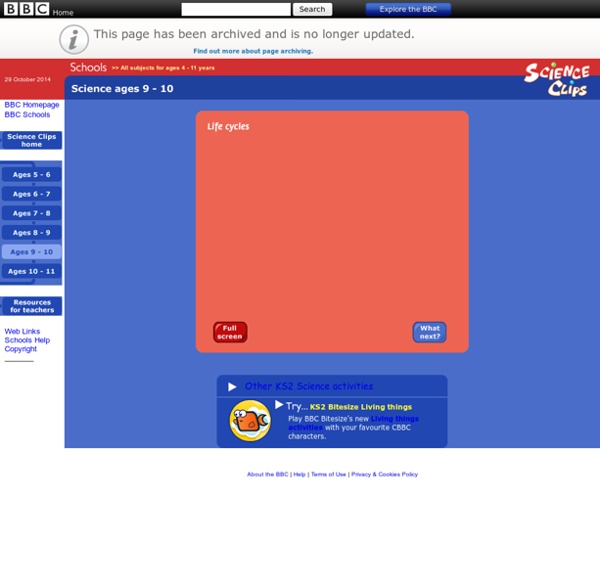



unità didattica - Osservare il ciclo vitale delle piante con fiore – Unità di apprendimento di Scienze per la classe prima di Annarita Ruberto Compito unitario. Realizzare una presentazione multimediale, oppure mappe concettuali e/o grafici, per illustrare le fasi del ciclo riproduttivo delle fanerogame. Cercare in rete immagini e brevi filmati adatti allo scopo. Obiettivi formativi. Attività laboratoriali. Fase 1. Diamo quindi la seguente consegna: svolgete una ricerca ragionata tramite Internet sul ciclo riproduttivo delle piante con fiore. Fase 2. Proponiamo agli alunni il video Osserviamo un fiore ►Esperienza 2. ►Esperienza 3. Proponiamo agli alunni il video La germinazione del seme Fase 3. Schema 1(clic sull’immagine per ingrandire) Verifica, valutazione, monitoraggio. Schema 2 (clic sull’immagine per ingrandire) Guarda lo schema in modalità interattiva Naturalmente, si può ricorrere ad altri strumenti di valutazione alternativi o/e paralleli alle rubriche, quali set di criteri individuati specificamente, check–list, griglie di valutazione.
42 flowers you can eat The culinary use of flowers dates back thousands of years to the Chinese, Greek and Romans. Many cultures use flowers in their traditional cooking–think of squash blossoms in Italian food and rose petals in Indian food. Adding flowers to your food can be a nice way to add color, flavor, and a little whimsy. Some are spicy, and some herbacious, while others are floral and fragrant. It’s not uncommon to see flower petals used in salads, teas, and as garnish for desserts, but they inspire creative uses as well–roll spicy ones (like chive blossoms) into handmade pasta dough, incorporate floral ones into homemade ice cream, pickle flower buds (like nasturtium) to make ersatz capers, use them to make a floral simple syrup for use in lemonade or cocktails. Eating Flowers Safely So. Eat flowers you know to be consumable–if you are uncertain, consult a reference book on edible flowers and plants.Eat flowers you have grown yourself, or know to be safe for consumption.
KS1 Science © 3913.co.uk The clues are the names of the adult animals, the correct answers are the name of their young. © v2vtraining.co.uk A three part sorting activity based around animals. Sort either animals and plants, animals with or without legs and how animals move. This is a quiz to support the understanding of adult and young animals. 15 multiple choice questions with built in answer checking. A three part activity to help with understanding the differences between young and adult animals. The materials sorting and labelling application is a simple to use science vocabulary exercise. A sound identification activity with sorting of musical instruments by how the sound is made. Watch the water cycle in action and add your own labels. Label words are simply dragged and dropped into the correct place in the diagram. Label words are simply dragged and dropped into the correct place in the picture. The plant parts labelling application is a simple to use science vocabulary exercise.
KS2 - Plant_Reproduction [Plants] [Making Seeds] [Photosynthesis] Reproduction in flowering plants Structure Pollination Fertilization Seed dispersal Germination All living things need to produce more of their own kind to replace ones that die. Flowering plants reproduce by making seeds. Before a seed can grow into a new plant they have to be fertilized by pollen. Pollen comes from another plant during a process called pollination. Pollination and fertilization take place in the flower of the plant. The structure of a flower Sexual reproduction in a flowering plant has FOUR main stages Pollination: This is when pollen lands on a new flower Fertilization: This is when the pollen and the seed meet Seed dispersal: This is when the seed is spread around, away from the plant that made it Germination : This is when the seed, having reached the ground, starts to grow into a new plant Pollination A plant is pollinated when pollen from another flower reaches it. Fertilization After pollination fertilization takes place. 1. 2. 3.
KS2 Science Finding out how you move and grow. Can you label the human skeleton? When you've finished move onto the animal skeletons. Do you know which groups living things belong to? Magnets have north poles and south poles. What does a year look like in space? © v2vtraining.co.uk The application consists of two sorting activities and one writing frame to support work towards the end of the unit. Solid, liquid and gas are called the three states of matter. Materials have different properties that make them useful for different jobs. Pupils can research information about teeth types, tooth structure and tooth decay. Use an information panel where pupils can research details about food groups and a balanced plate approach to a healthy diet.Balanced Plate lesson outline An information panel to explains the terms used in, and concepts behind, food chains. This resource consists of a labelling activity, an animation of the water cycle followed by another labelling activity.
Plant Anatomy Advertisement. EnchantedLearning.com is a user-supported site. As a bonus, site members have access to a banner-ad-free version of the site, with print-friendly pages.Click here to learn more. (Already a member? A plant is a member of the kingdom Plantae, a living organism that utilizes photosynthesis, a process in which energy from sunlight is converted to chemical energy (food). Structure and Function: Roots anchor the plant in the ground and absorb water and mineral nutrients from the ground. The following is a diagram of the external anatomy of a typical flowering plant: axil - the angle between the upper side of the stem and a leaf, branch, or petiole.axillary bud - a bud that develops in the axil.flower - the reproductive unit of angiosperms.flower stalk - the structure that supports the flower.internode - the area of the stem between any two adjacent nodes.lateral shoot (branch) - an offshoot of the stem of a plant.leaf - an outgrowth of a plant that grows from a node in the stem.